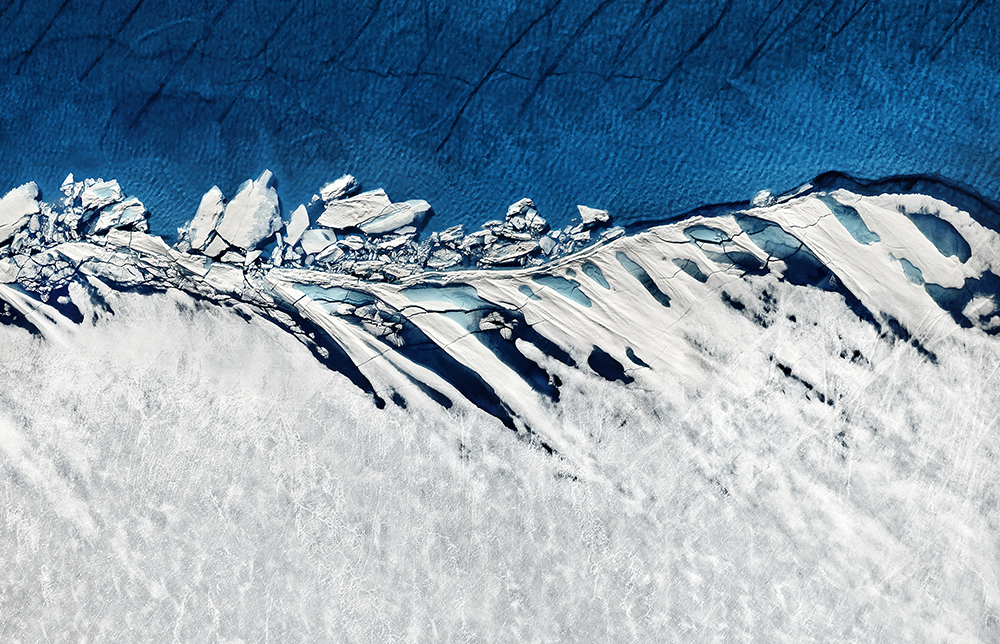The stunning images of THAW are a beautiful and haunting reminder of our warming planet.

High above Greenland’s ice sheet in a doorless helicopter, photographer Timo Lieber photographs melting ice. His latest exhibit, THAW, captures climate change in real time, with striking contrasts of fresh blue meltwater amidst polar whites.
Lieber is a renowned UK photographer, known for stunning aerial displays. His work focuses on the environment, ranging from alpine ski slopes to oceans in the summer.
“The environment is a key ingredient in all my photographic work. Having travelled to the Arctic numerous times and seeing the rate of change there, I had the idea of creating this new series,” he said.

THAW: Capturing Polar Ice With Photos
Timo Lieber Interview












